Anatomy of the Perfect Contractor’s Truck
After over two years of general contracting, I’ve finally transformed my truck into the perfect contractor’s truck. Whether you’re a woodworker, a contractor, a remodeler, or a serial DIYer, you’ll find this article about the Anatomy of the Perfect Contractor’s Truck beneficial for discovering accessories to make your truck more practical for hauling tools and lumber.
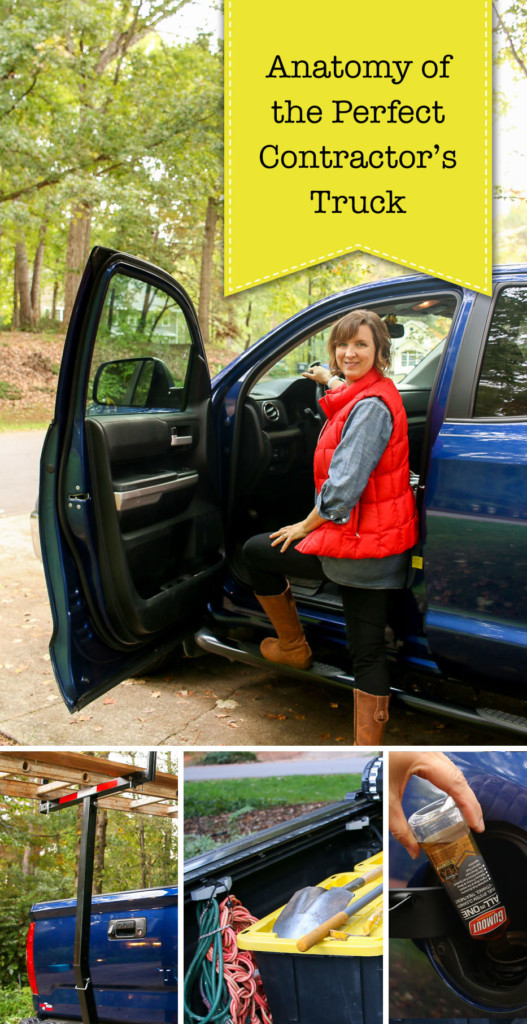
Back at the start of the Saving Etta project, it became clear I’d need a pickup truck to assist me with hauling materials and my tools. I purchased an old white pick up truck for $4,500.
Although the truck got me through the project, it wasn’t without a fair amount of headaches. Frankly, I felt like the truck and I didn’t get along. Twice the truck locked me out. One time the keys were in the ignition and the engine was still running! Little annoying things kept breaking on the truck (like the back door latches one after the other) and then the ABS brakes (which actually control the regular brakes too) went out to the tune of $900. I replaced them, but was always wary of the possibility of them dying on me again. Between the rising repair costs and the fear of being locked out, I decided it was time for another used truck after I sold the Saving Etta house. This time I had a much clearer vision of what I needed in a general contractor’s truck. And I think you’ll appreciate my new-to-me truck and how it really is the perfect contractor’s truck! Keep reading to find out the accessories that make it perfect and how I’m planning on keeping this truck running smoothly for me.
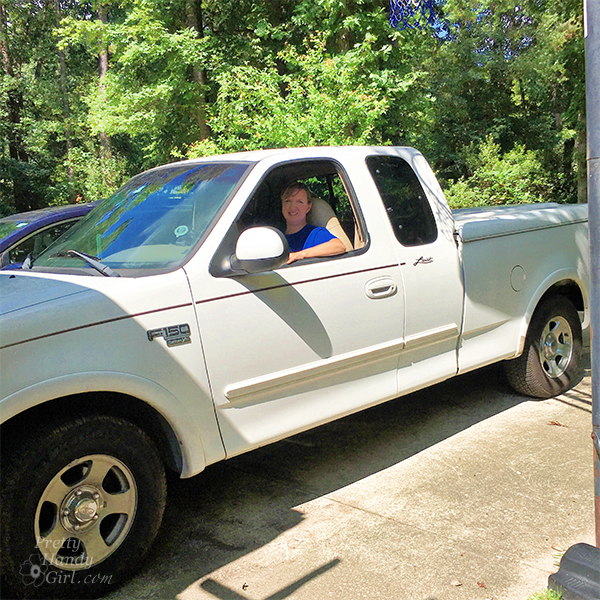
This is a sponsored post for Gumout. I was provided complimentary products and was compensated for my time and efforts to promote Gumout. I was not told what to write. All opinions are my own. I am particular about the brands I represent and will always let you know when you are reading a sponsored post.
The Search for the Perfect Contractor’s Truck:
When I searched the internet for ideas for what I should look for in a general contractor truck, all I found were links to truck accessory websites. Then I looked on YouTube and discovered lots of ideas for beautiful custom-built tool storage in a truck bed. Besides not having the time to build something for my truck, I also knew it would limit the flexibility and storage capacity in it.
The other options I found were true work trucks with more storage than I wanted. For example, the truck below is outfitted with storage compartments, but you usually give up valuable real estate when built-in storage is added. I knew I needed the flexibility of a full pick up truck bed sometimes. Therefore I nixed the idea of built-in storage compartments.
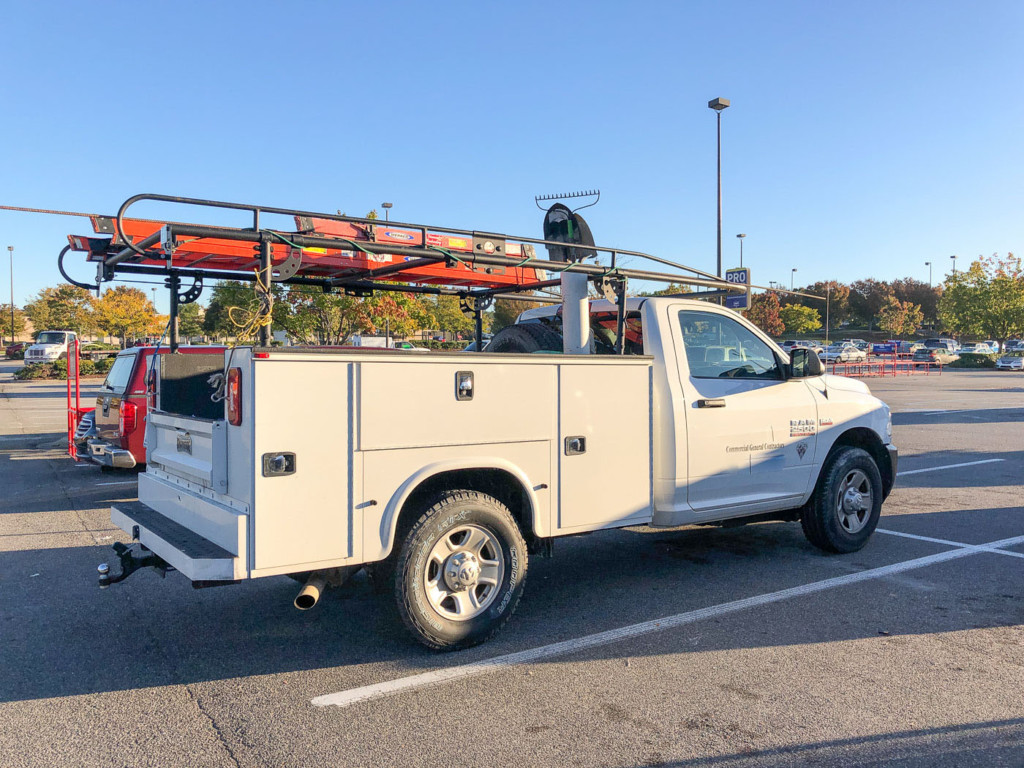
Before searching for another truck, I made a list of must-haves and “would be nice” options on a contractor truck.
Contractor Truck Must Haves:
- Safe (and Weather-Proof) Place to Store Tools
- Ability to Haul Lumber
- Flexibility to Carry Cargo like Appliances
- Back Seat for Passengers (and Dog)
- Additional Storage Space in the Back Seat
- Truck Bed Large Enough for a Sheet Goods
- Locking Cover for Truck Bed
- Tow Hitch
- Strong Engine for Hauling Trailers
Contractor Truck Optional Features (not Necessities):
- Back Window that Opened
- Additional Storage Bins inside Cab
- Radio/Bluetooth Stereo
- USB Port
- Truck Bed Rubber Mat
- Easy Cleaning Floor Mats inside Cab
- Leather or Vinyl Seats
- Back Up Camera
- Power Outlet
With my list made, I began searching for used pickup trucks that would meet my criteria. I purposely didn’t look at new trucks because I knew I’d be putting this truck through the paces and I didn’t want to cry over a scratch or dent on a new truck.
Ultimately I narrowed my search to 4-5 year old used trucks because I didn’t want to buy an older model again.
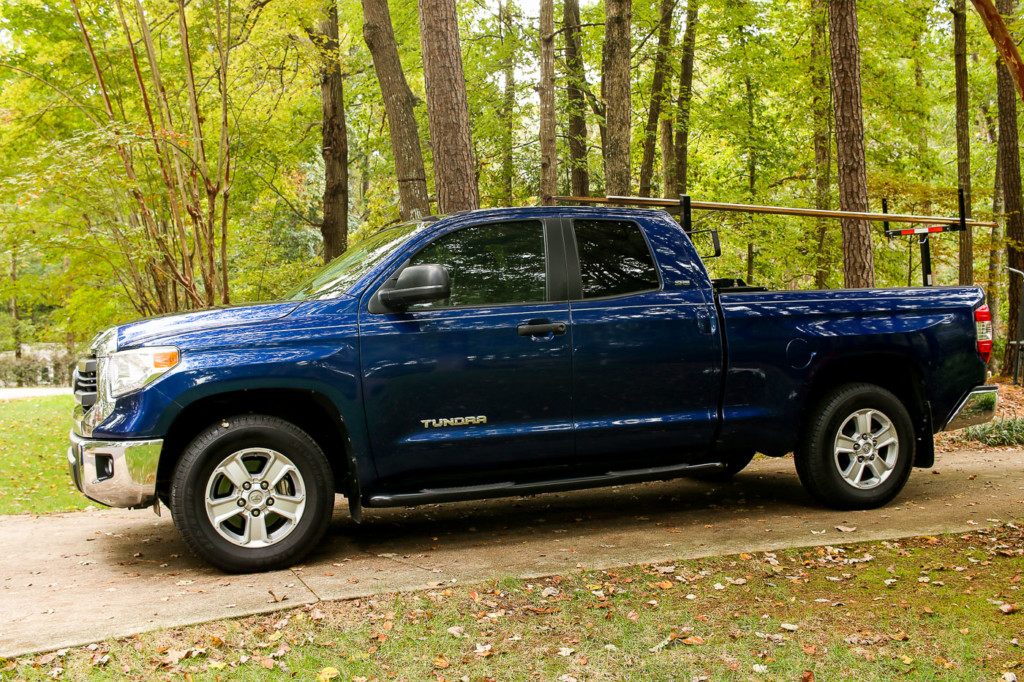
Must Have Features in a Contractor’s Truck
(I’ve included affiliate links for your convenience. I earn a small percentage from a purchase using these links. There is no additional cost to you. You can read more about affiliate links here.)
Let me preface this by saying, I’ve been using this truck for almost a year now and it fits my specific needs as a general contractor perfectly. I perform a lot of my own labor, so I load my truck with the tools I’ll use for the week and remove the ones I don’t need that week.
Tool Storage:
While using the old white truck, I purchased several utility bins to keep tools and equipment organized in the bed area. This system worked so well, I decided to continue to use the bins in my new navy truck.
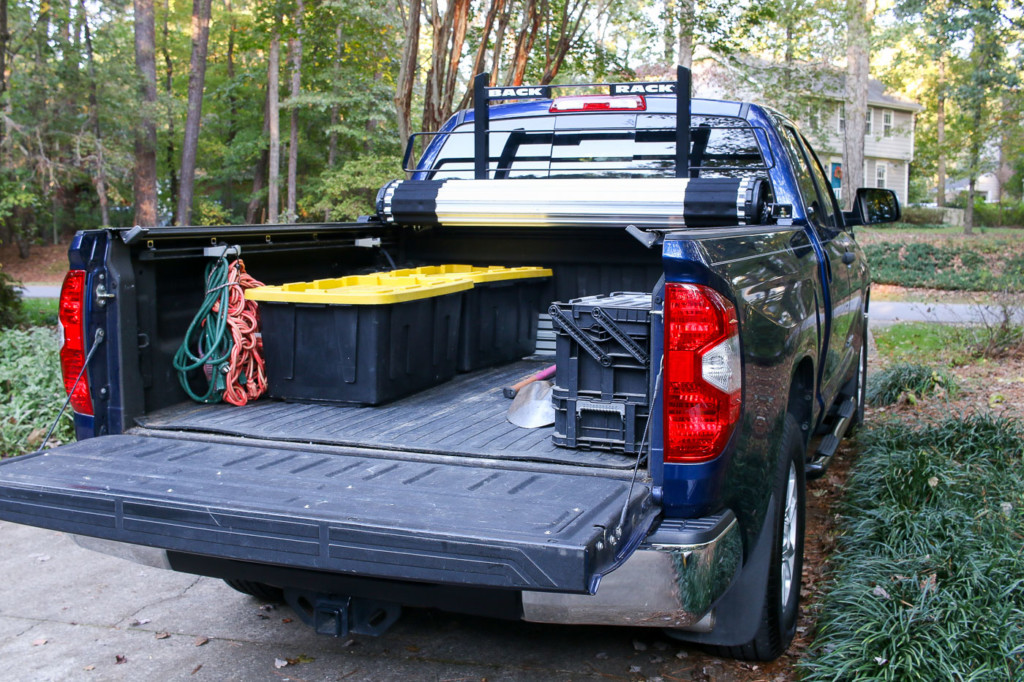
The nice thing about the bins is they keep my tools out of sight and drier than just sitting loose in the truck bed. Plus, the raised edges on the bin lids let me set things on top of the bins and they won’t slide around.
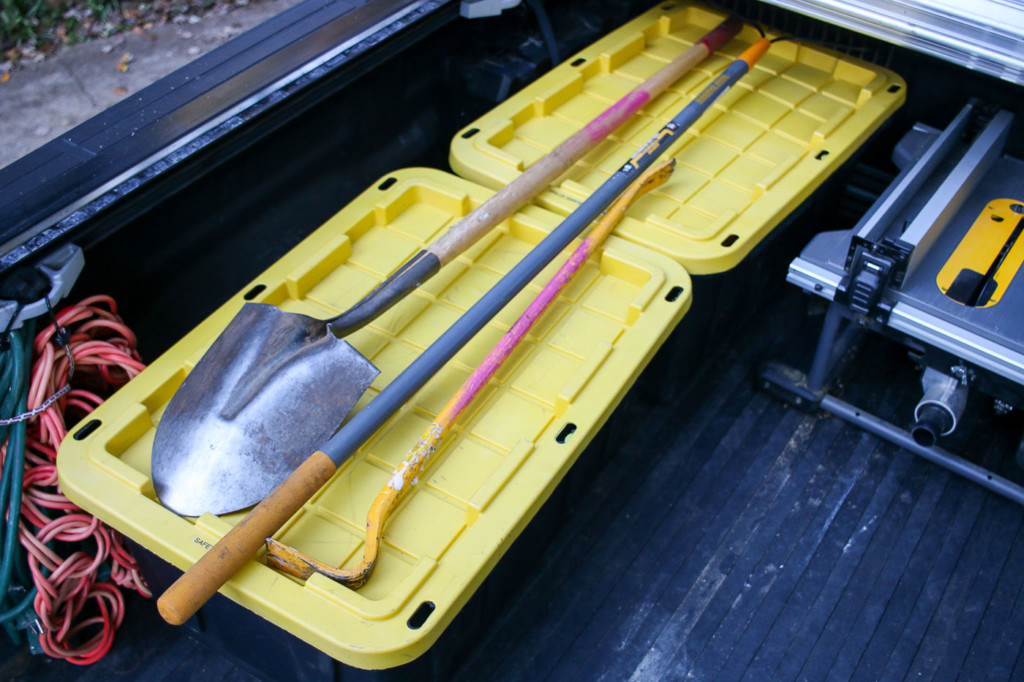
Inside one bin is my safety gear and occasionally a can of WD-40. LOL, not sure how that got in there. The other bin holds my smaller power tools, batteries, and bits for my drills.
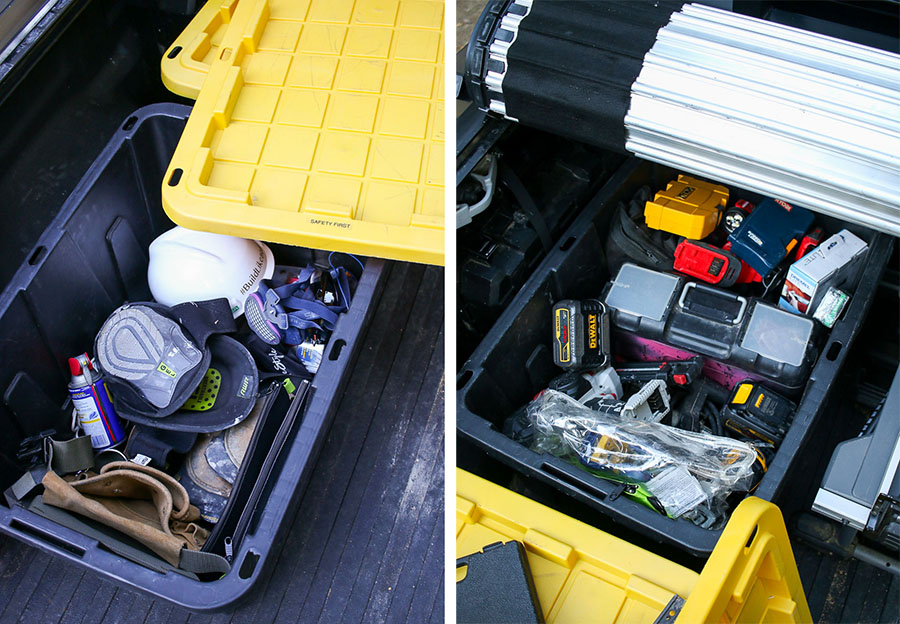
The utility bins are easy to maneuver, move, or remove when I need the space in the truck bed.
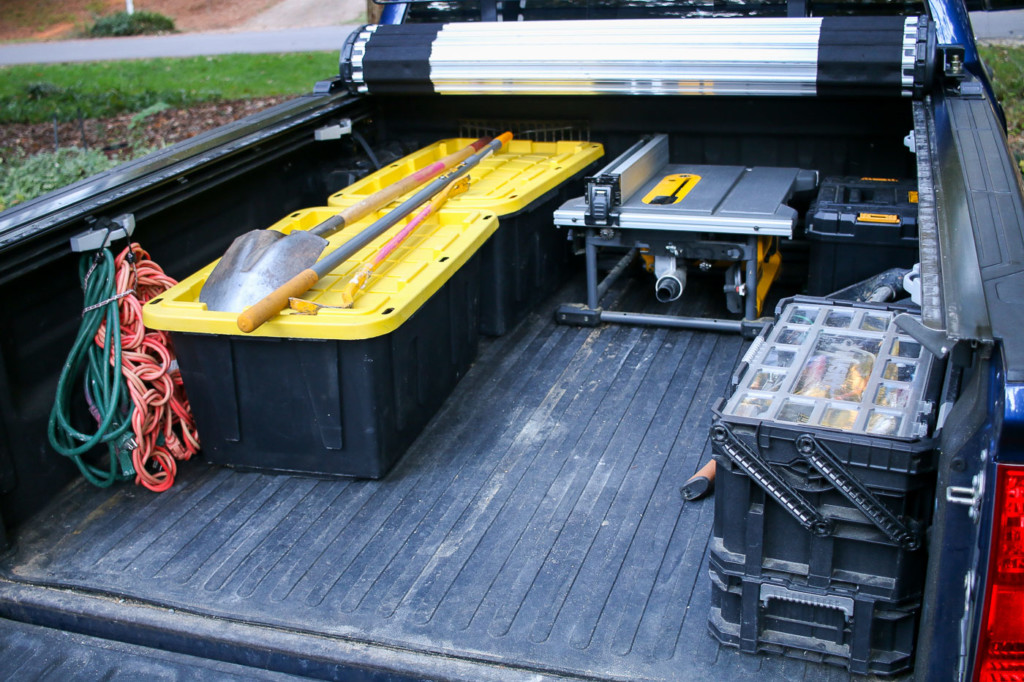
Hand tools, small nails, screws, and other tools fit neatly in the Husky connect toolboxes. I purchased this top toolbox and the bottom handled-bin. Connected together they create one large toolbox.
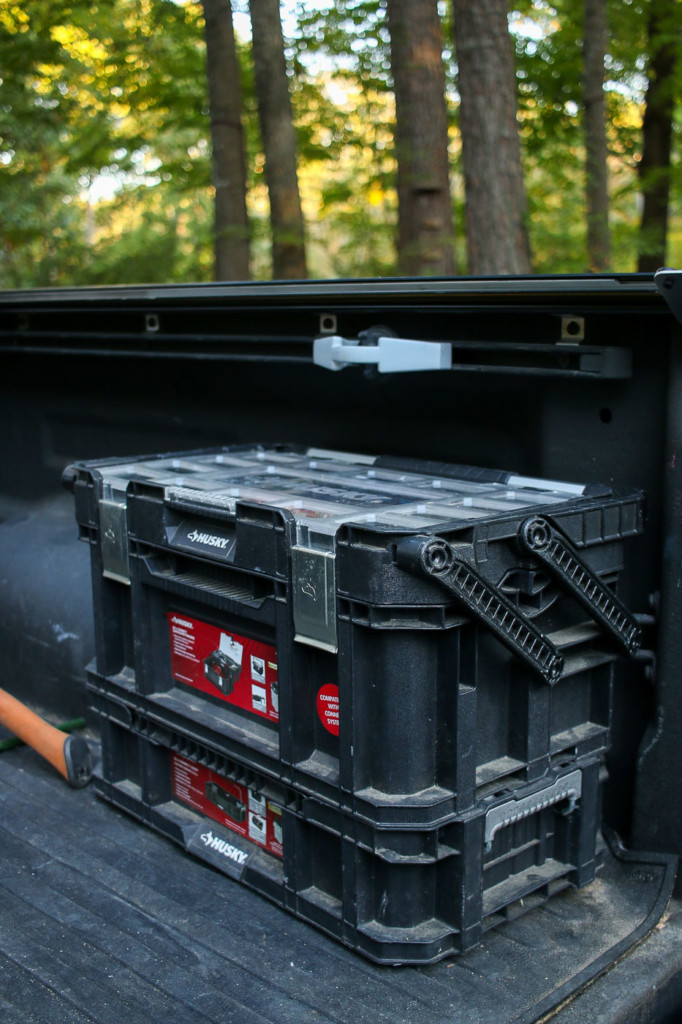
Hauling Lumber and Materials:
(Please Note: the photos below are for illustration purposes only. Be sure to secure and tie down your lumber and material loads before transporting them.)
Traditionally I try to have lumber and supplies delivered to the job site. But, there are definitely times when it’s easier for me to pick up lumber at the last minute. With the old F-150, I had an operable back window but made the mistake of hauling big pressure treated 2x10s and resting them on the dashboard. The first bump I hit, I cracked my dashboard. Lesson learned—and for that reason—I decided to purchase a headache rack, specifically a BackRack for the Tundra.
For those occasions when I want to haul long lengths of trim and lightweight lumber, I can rest stacks on the rails of the BackRack and feed them through the open back window. But, I never let the lumber touch the dashboard or the windshield. (No need to risk damaging them.)

Another way I use the BackRack is to haul materials over the truck cab. Normally I don’t run the lumber at this extreme an angle, but as long as it’s not going to snap and is tied down, this system works well.
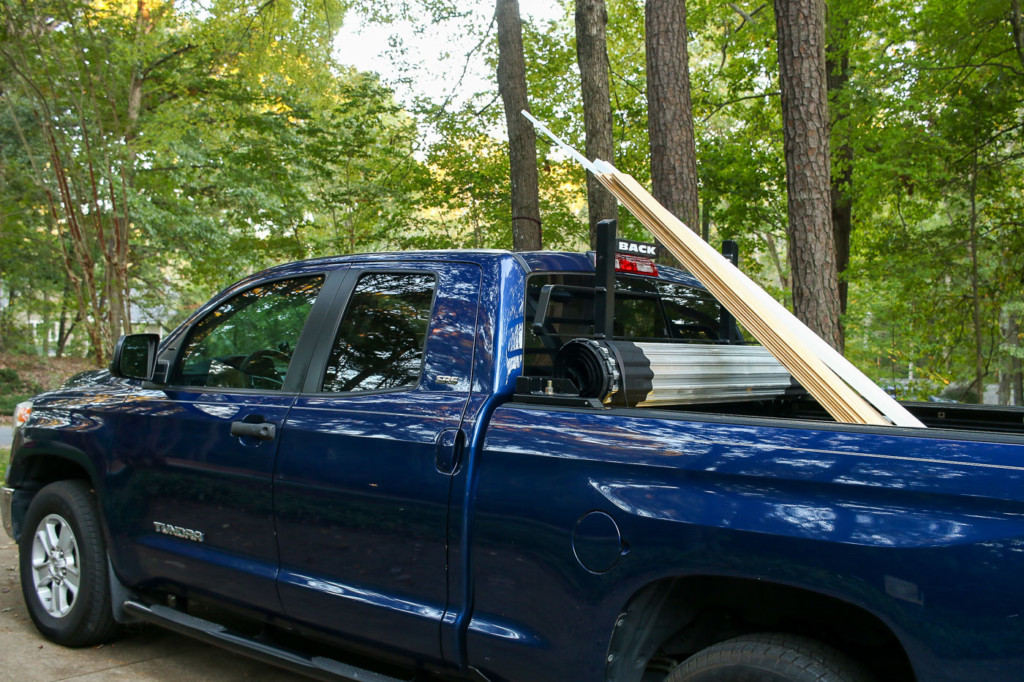
If I have to transport long boards or extension ladders, I add the bed extender. You can see it below (the bar attaches to the hitch.) The bed extender I bought also has the option to be reconfigured to support lumber extended directly from the truck bed. This has been a huge help when transporting up to 12′ lengths. Anything over that I run up and over the cab on the Back Rack.
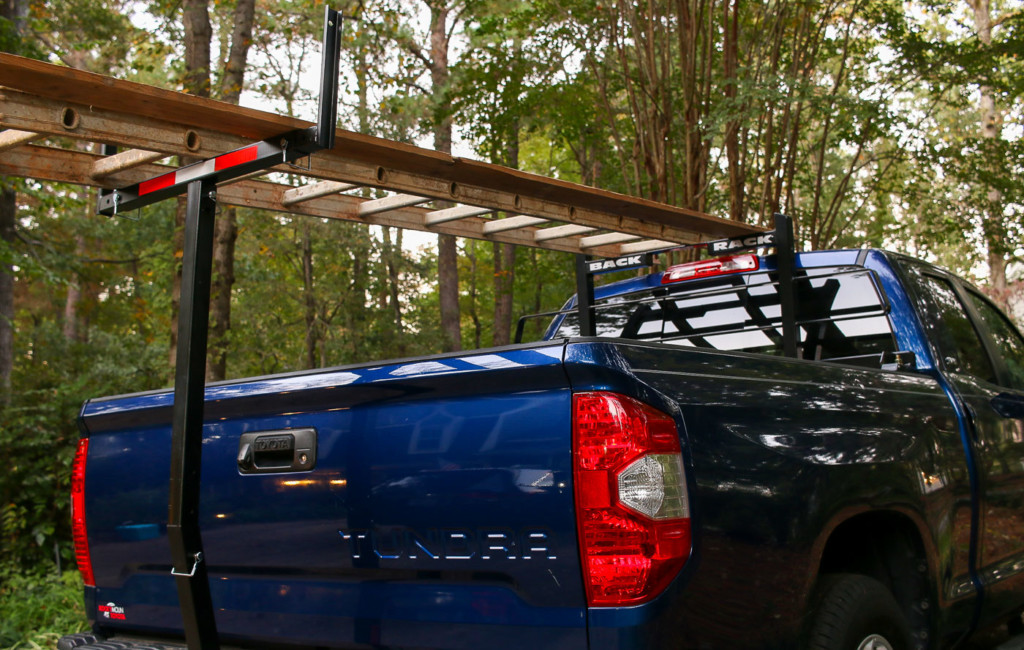
The bed extender I purchased is the MAXX Haul Truck Hitch Bed Extender, you can purchase it on Amazon or your local truck accessory shop. When not in use, I can easily store it in my garage or shed.
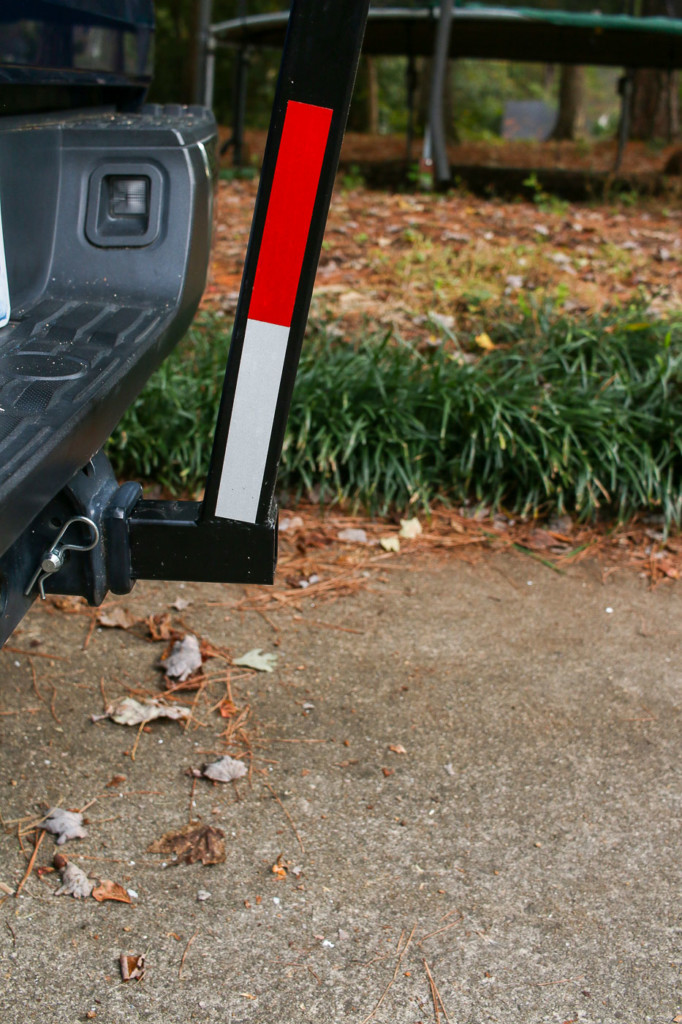
If I need to haul a trailer, I can remove the bed extender and insert a towing ball mount. This feature comes in handy for hauling everything from open to closed trailers.
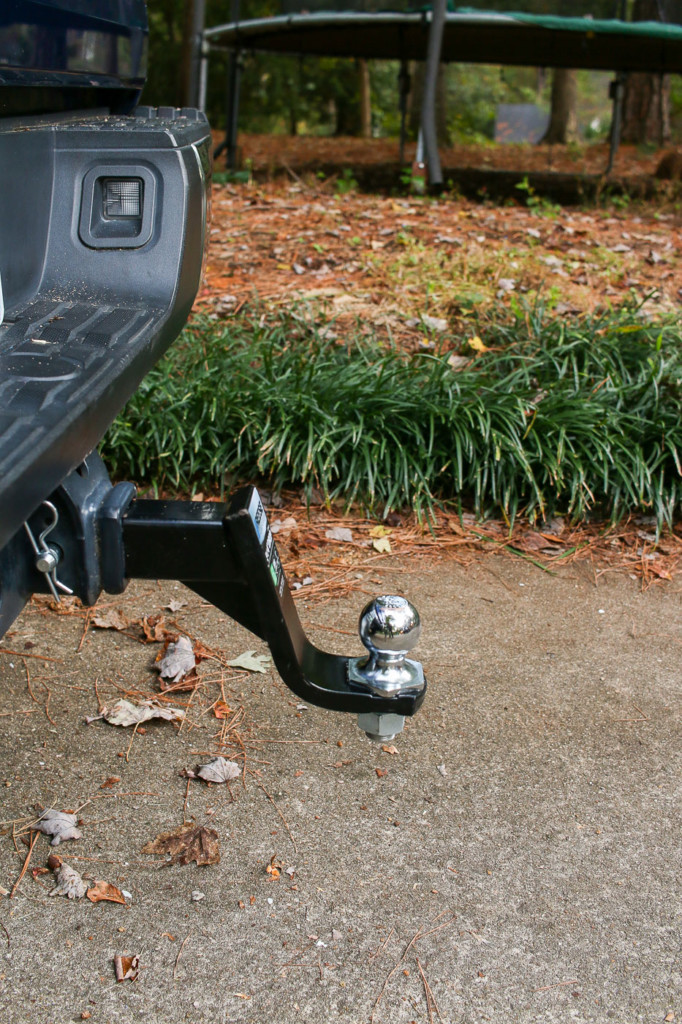
Security and Weather Protection:
My old F-150 had a hard tonneau cover on it. The cover was great for weather protection and security, but it didn’t offer full use of the bed. If I had to remove it, it was a literal pain in the neck trying to crawl under the cover to get to the clamps and remove items from the back of the bed. If I needed to haul appliances I had to get help removing the hard cover. It was definitely not a quick or easy process.
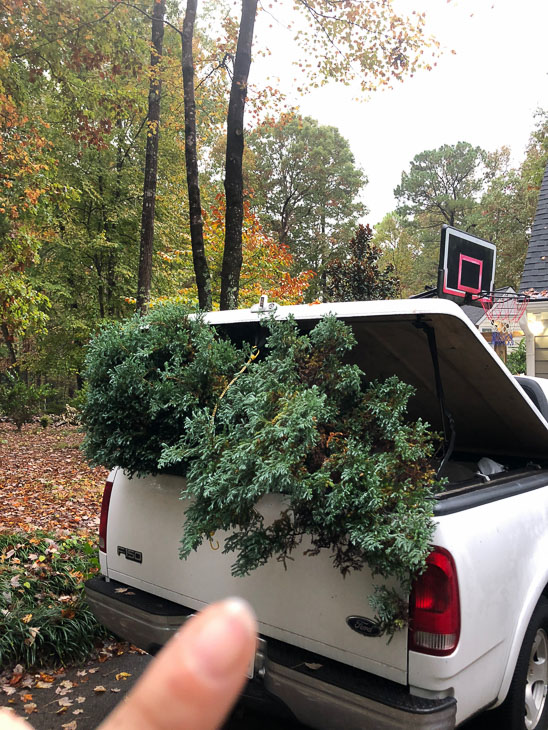
After purchasing my Tundra, I visited our local truck accessory shop and talked at length with the salespeople there. I explained all the requirements I had for my new truck and specifically asked for alternatives to the hard tonneau cover. They pointed me in the direction of the BAK Revolver X2 rolling tonneau cover. This is by far my favorite addition to the truck!
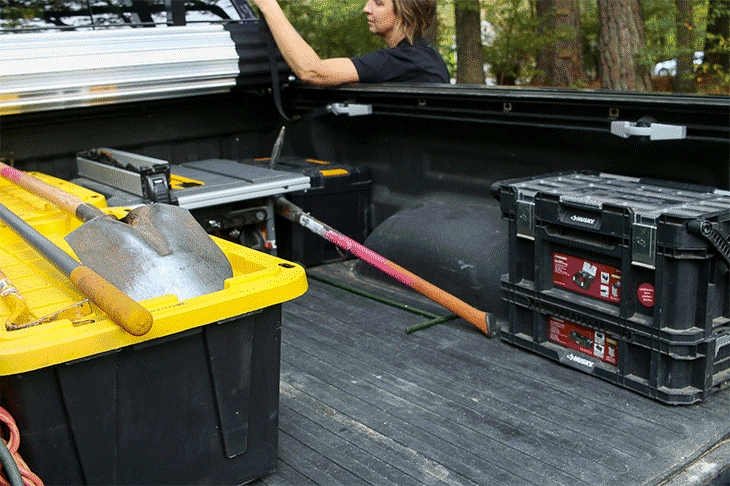
I can roll it open and closed one-handed and it gives me access to entire truck bed. Once closed, the cover won’t open until the tailgate is opened. If you want it locked, just lock your tailgate! The cover will rest nicely on top of sheet goods that don’t fit inside the truck bed.
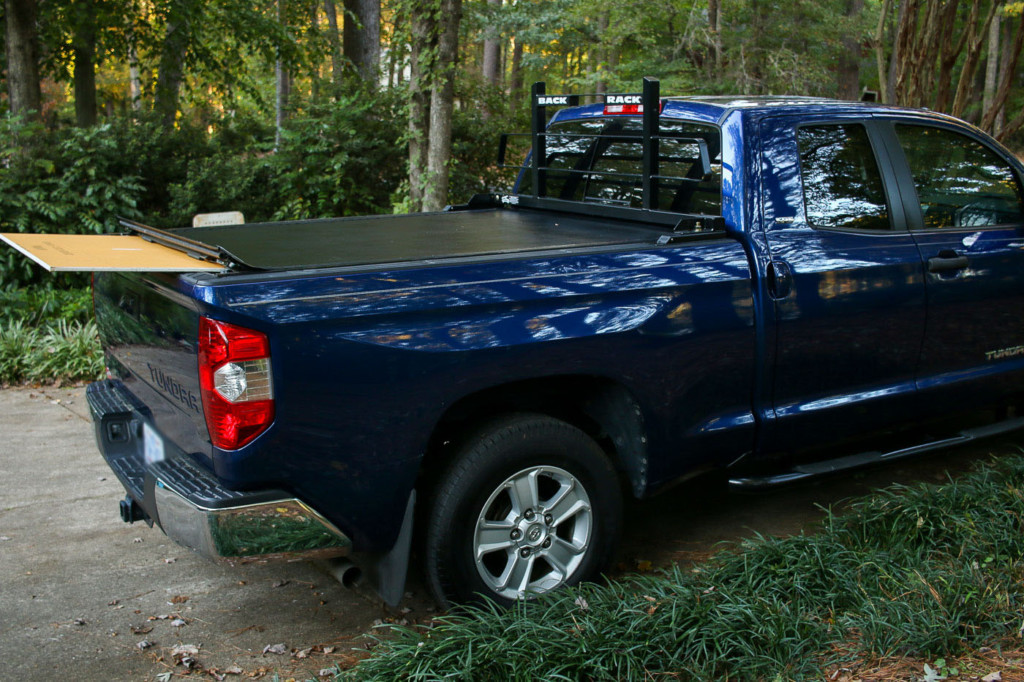
And when I need to haul appliances, I can quickly roll the cover open and load in tall appliances (unlike the old hard cover on my Ford.) For carrying appliances, the BackRack doubles as a tie-down anchor for safely transporting appliances or other cargo.
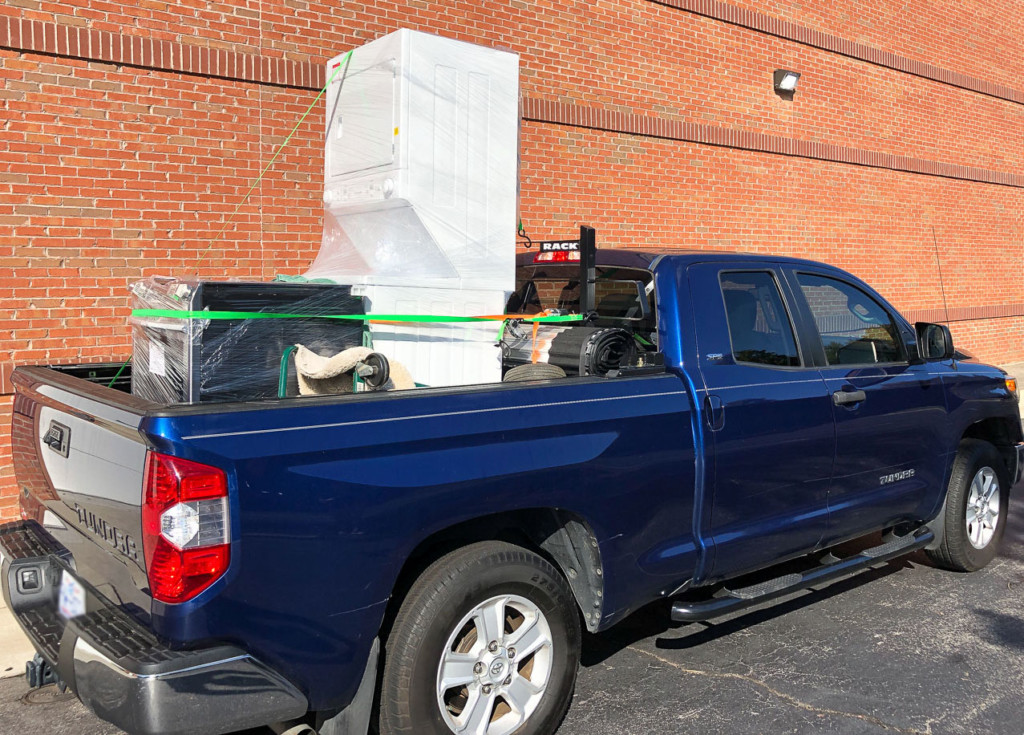
If I had any complaints about the BAK Revolver X2 cover, they are minimal. The first is the aluminum underside gets very hot when it’s in the sun. But, I quickly learned to only touch the black felt strips when rolling the cover.
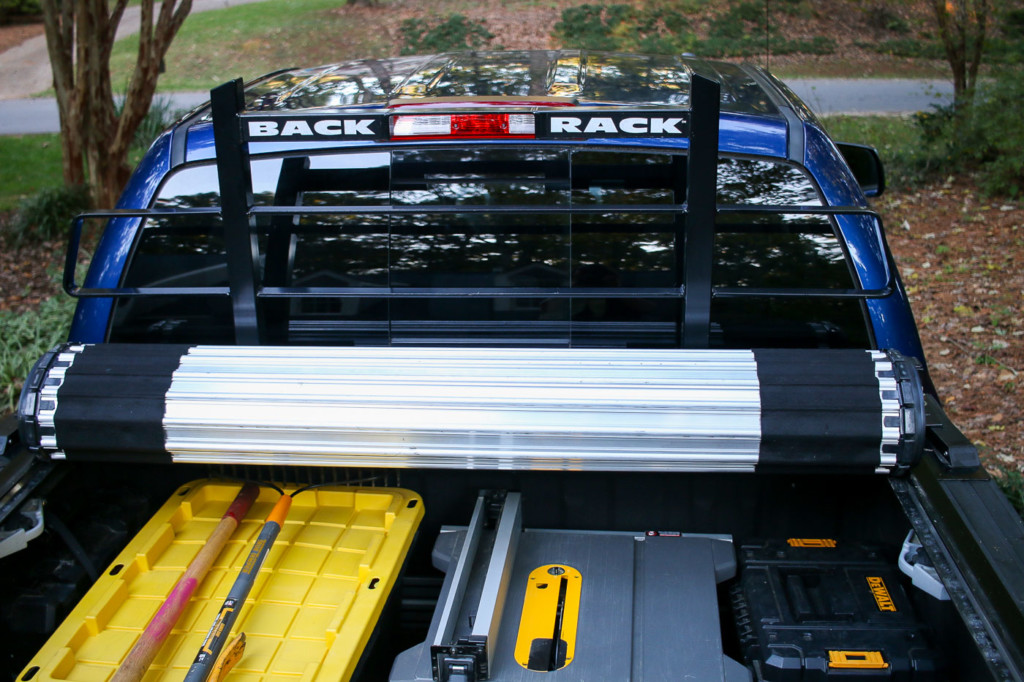
My second complaint is, the cover isn’t 100% weatherproof. A heavy rain will allow some water to seep into the truck bed at the four corners of the cover. But, I store my tools in the storage bins, so this isn’t a huge deal for me.
Miscellaneous Interior Storage and Contractor’s Mobile Office:
Inside the cab of my truck are all the things I need on a day-to-day basis. I store materials I don’t want to be exposed to the weather inside. My Tundra has a lot of compartments, but my favorite is the sunglasses compartment where I keep my favorite safety glasses inside to prevent them from getting scratched.

The center console has lots of additional storage areas for my tape measure, business cards, my favorite utility knife, and more.
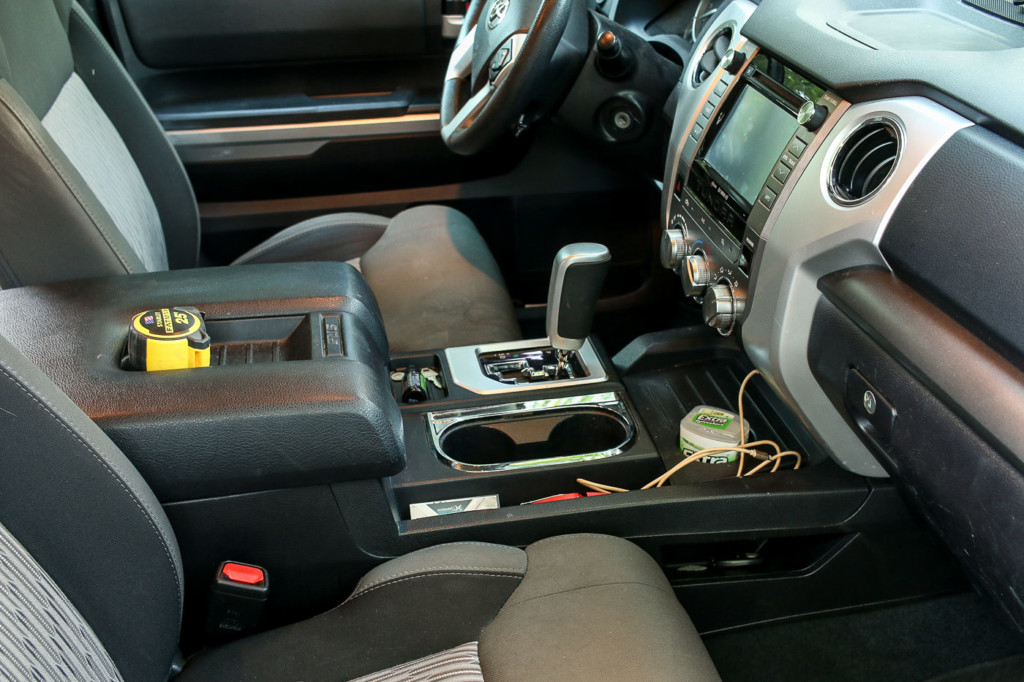
Pens and pencils are close at hand in this pen grip holder which attaches to the visor in my truck.
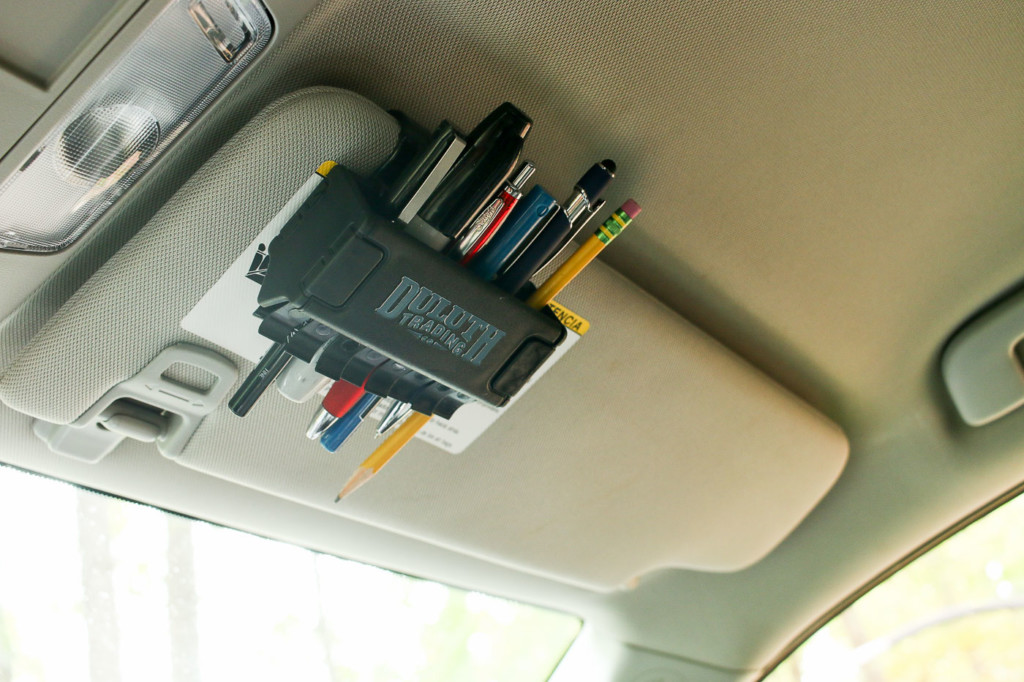
In the backseat, I have a file bin that holds all the files I need to reference throughout the day. For safety, I keep it buckled up because I wouldn’t want to get hit in the head by the metal bin. Ouch.
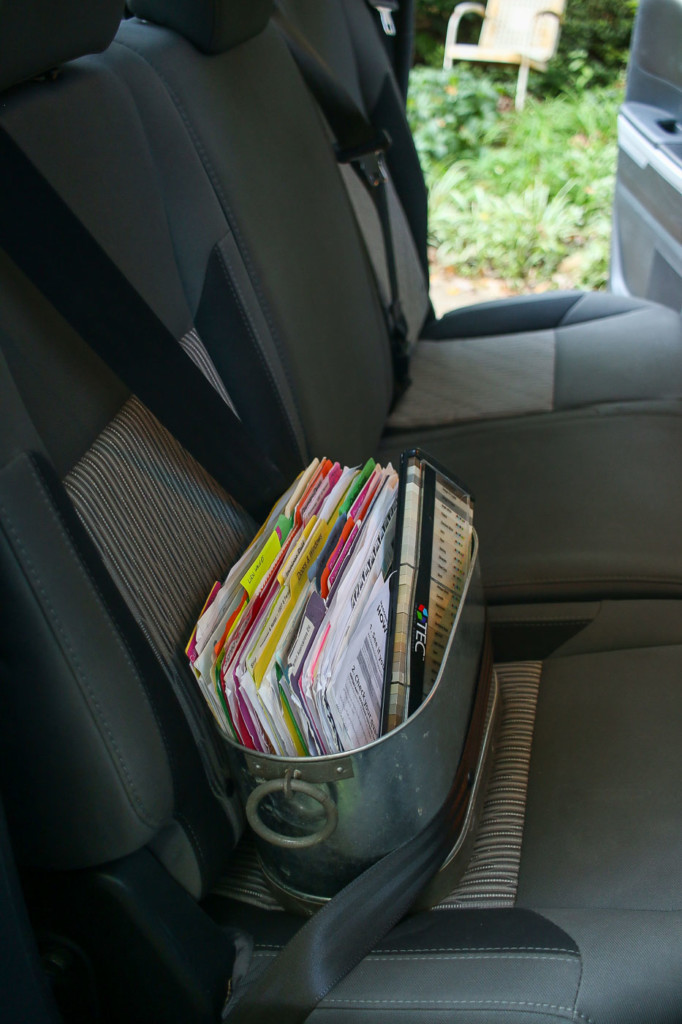
One of my most miserable memories from working on the Saving Etta project was the day it was cold and rainy. After that experience, I always keep a change of clothes in my truck. My washable coveralls are also stored in the bag. I tend to spend a fair amount of time in attics and crawlspaces and the cloth coveralls are more comfortable (and form-fitting) than the disposable ones. A clean pair of boots are also a necessity. Did I tell you about the time I had to go see my son’s teacher at school and my boots were so muddy I had to leave them at the front entrance and walk through the school in my socks? True story.
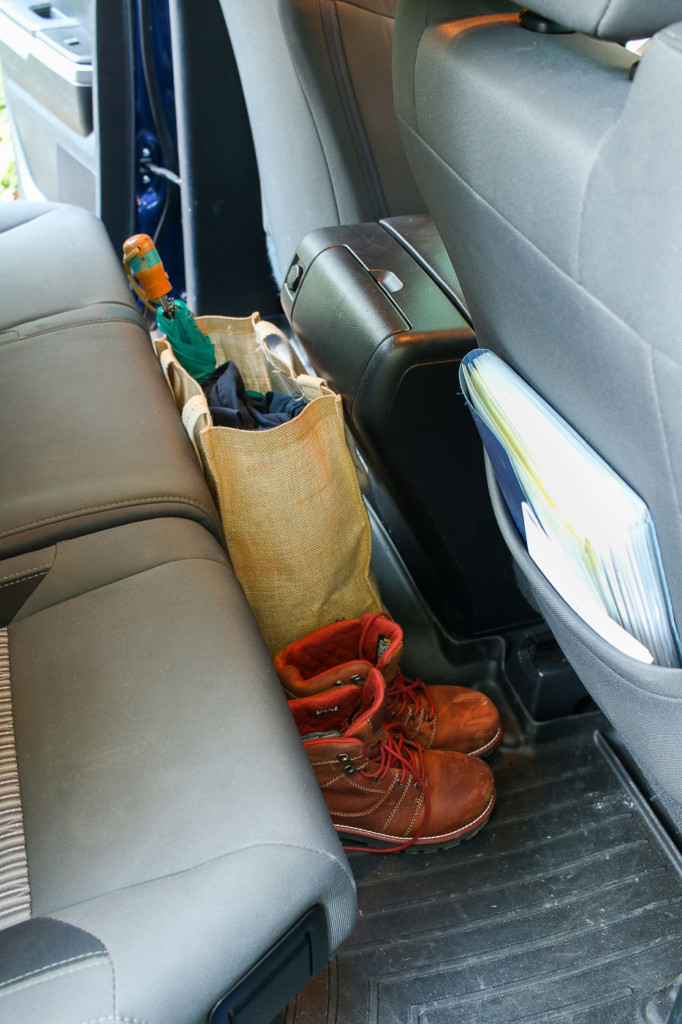
Any contractor knows receipts are plentiful while working on a project. I keep my receipts organized in the accordion file in the passenger seatback pocket. I never have to hunt for receipts again and they don’t get scattered all over.

Protecting My Perfect Contractor’s Truck:
The Tundra and I are definitely working well as a team. It hasn’t locked me out once and there aren’t random things breaking on my truck. I’m determined to keep this truck for a long time and I want to protect it from excessive wear and tear. Therefore when Gumout approached me about talking about their products, I was all in!
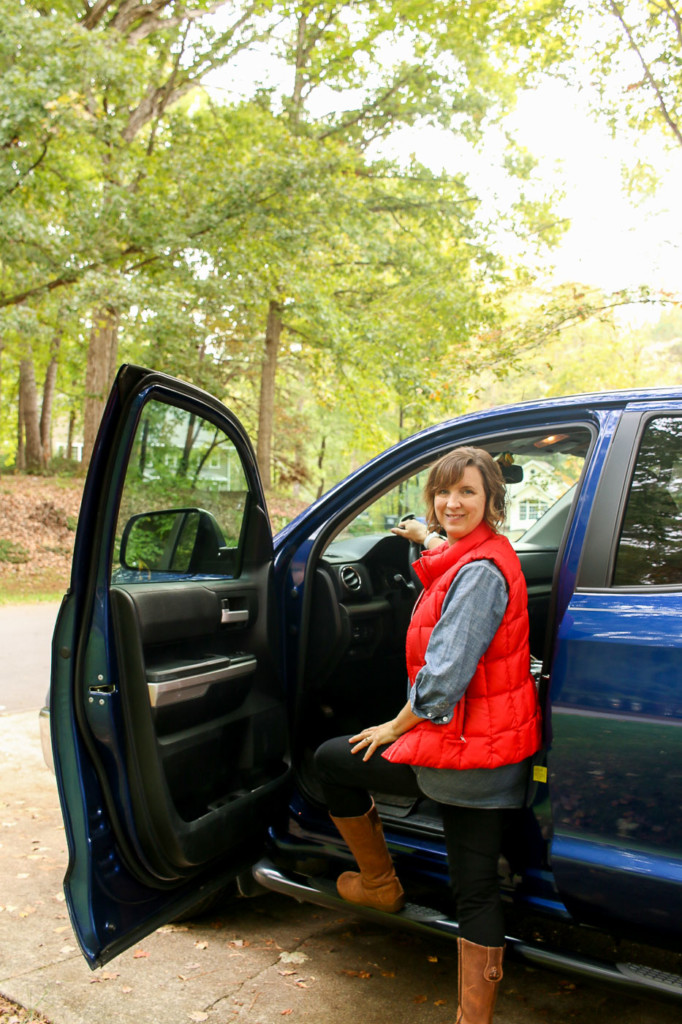
To keep my Tundra running smoothly and let me have a dependable ride, I make sure I keep up with regular maintenance like oil changes on my truck. I also started protecting the engine by adding a bottle of Gumout All-in-One Fuel System Cleaner every 3,000 miles.
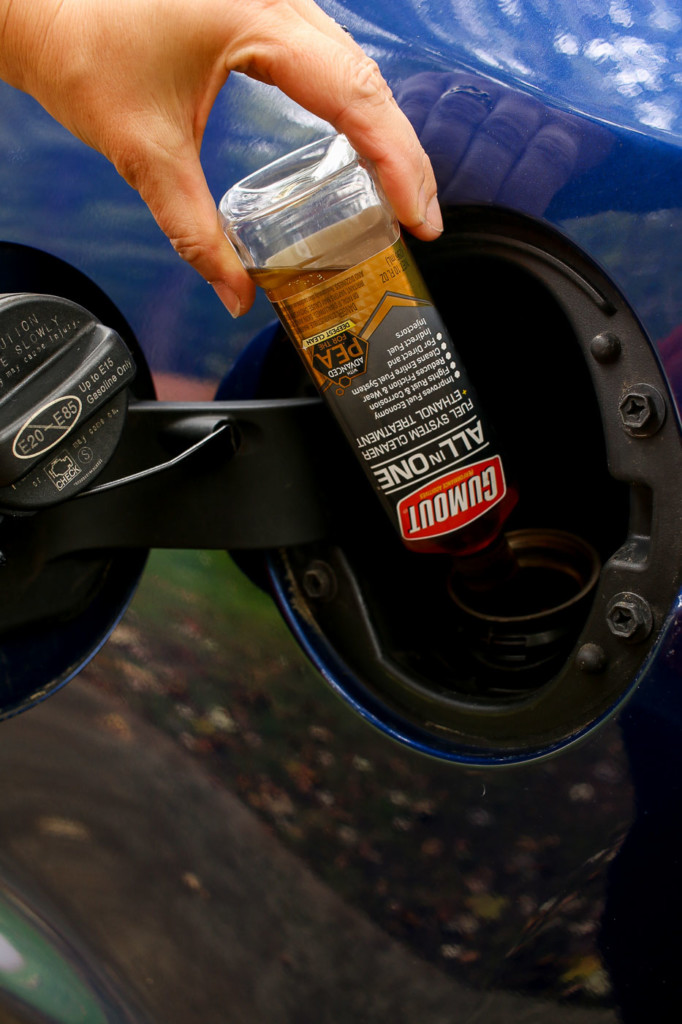
Gumout All-in-One is protecting my truck specifically in these ways:
- Helps improve fuel economy and horsepower
- Helps boost engine performance
- Flushes your fuel system from gas tank to tailpipe
- Cleans and protects engine parts
- Get every mile out of each tank of gas
- Helps keep your engine running smoothly
- Guards against deposits and wear that can prematurely age an engine
- Helps keep your engine younger, longer
- Helps your car maintain peak performance
To protect your vehicle, add one bottle to a nearly empty gasoline tank. Refill the gas tank with up to 25 gallons of gasoline. For best results, do not refill the tank until near empty. Repeat every 3,000 miles. (It’s easiest to remember when it’s time to use Gumout again if you time it just after each oil change.)
My truck has about 60,000 miles on it, but next year that odometer will likely roll over to 75,000 miles. When that happens, I’ll be switching to the Gumout Regane High Mileage Fuel System Cleaner.
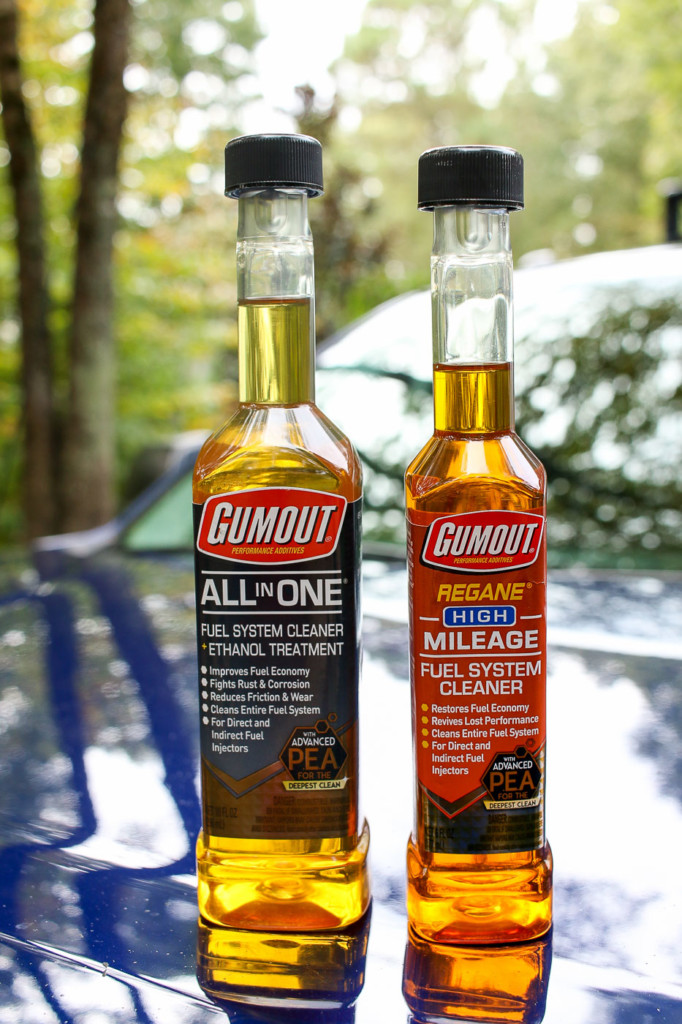
The Gumout Regane High Mileage Fuel System Cleaner benefits higher mileage automobiles in these ways:
- Cleans your fuel system
- Helps restore engine performance
- Helps restore engine power
- Helps extend the life of your engine
- Helps keep your engine going
- Make it part of your car’s maintenance routine
- Help add years to your car in just seconds
- Prevents and removes deposits that compromise fuel economy
- Minimizes carbon buildup
- Prevents excess friction and reduces carbon deposits
Now I’m curious, do you have any accessories or options I should add to my perfect contractor’s truck? Or let me know how you protect your automobile or truck? I definitely love my truck.

Disclosure: This is a sponsored post for Gumout. I was provided complimentary products and was compensated for my time and efforts to promote Gumout. I was not told what to write. All opinions are my own. I am particular about the brands I represent and will always let you know when you are reading a sponsored post.

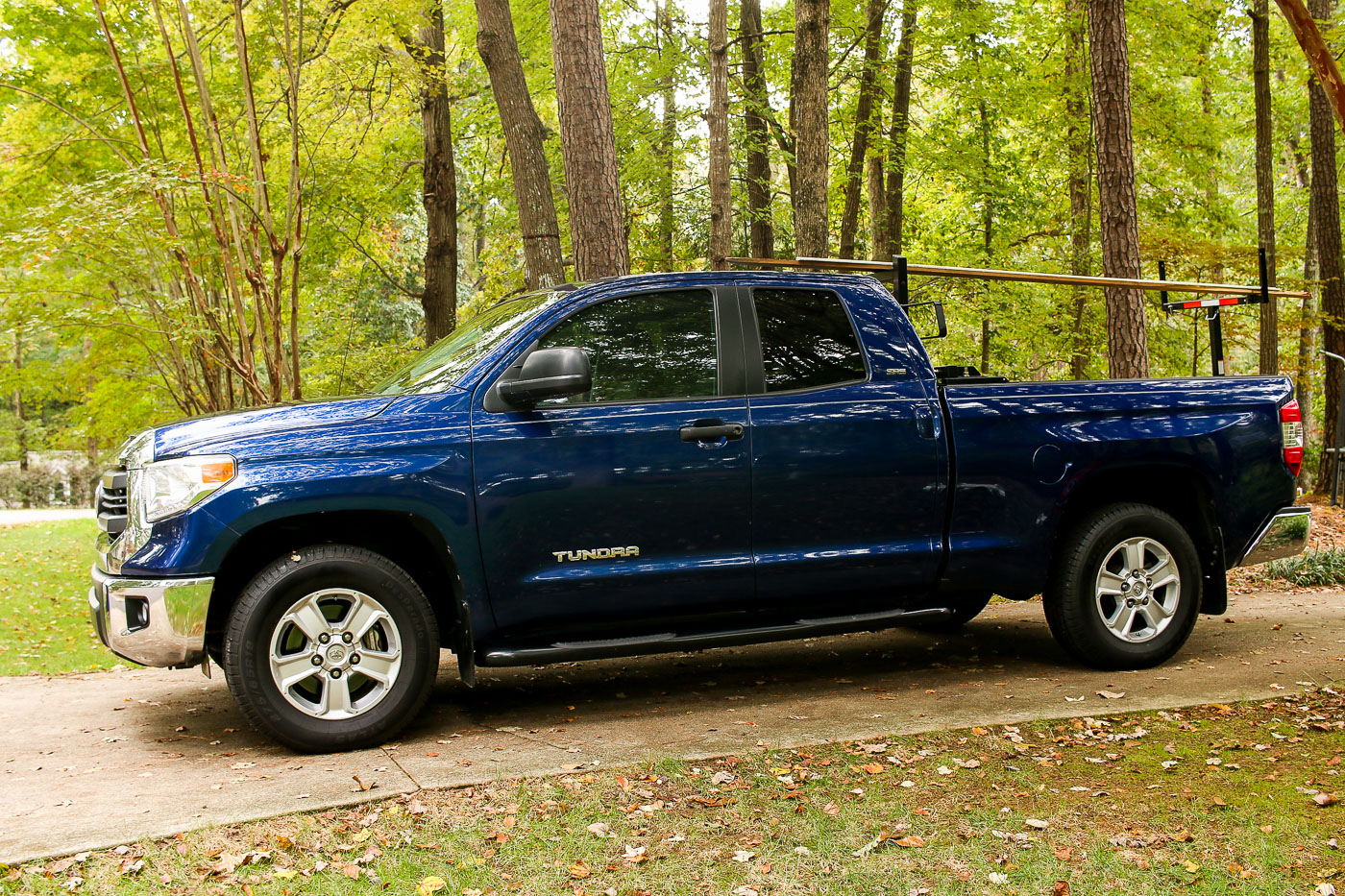


Do you mind me asking how much you paid for your Tundra? This is a timely article as we are looking to replace our 13 year old SUV on the next 2-3 months. 😀
You can use CarGurus.com to help you determine the cost of used Tundras. It really depends on the model, mileage, and condition.
While he doesn’t need a work truck my husband has always added Rhino Coating to the bed of his truck. It keeps things from scratching the bed of the truck. As you know scratches and gouges can lead to rust on any vehicle. And I commend your choice of a Toyota Tundra because of their durability and reliability. I hope you have many successful years with your truck.
I forgot to mention, I bought a rubber mat to line the bed! Thanks for the recommendation though.